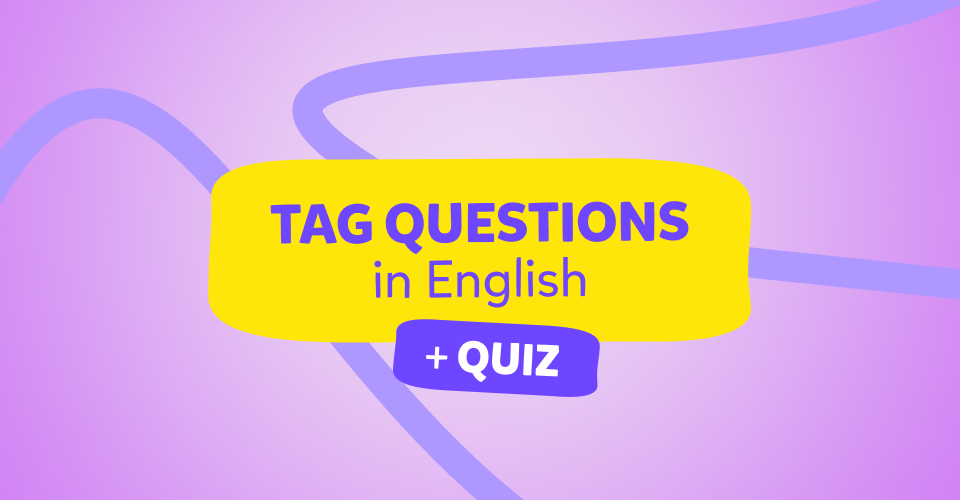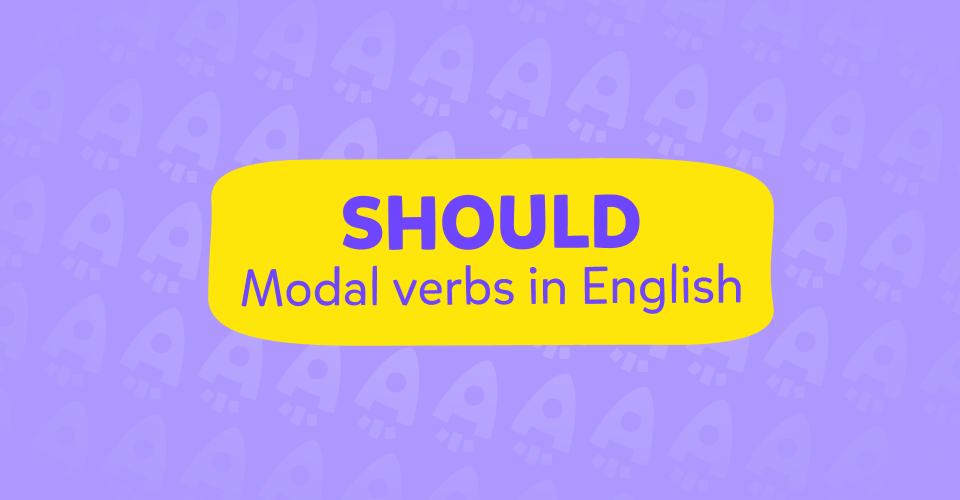Studying English is pretty cool, isn’t it?
Sì, pensiamo anche noi che studiare l’inglese sia molto divertente soprattutto quando si arriva a un argomento come questo: le question tags.
Le tag questions e le conseguenti short answers risposte brevi in inglese) sono una struttura usata molto, anzi moltissimo nella conversazione inglese a tutti i livelli. Molto più che in italiano. Siamo sicuri che chiunque impara inglese l’abbia incontrata centinaia di volte, anche chi ha solo un inglese per principianti.
Per questa ragione Novakid – scuola che insegna ai bambini inglese online in 49 paesi del mondo – ha deciso di dedicare alle domande retoriche in inglese e alle short answers in inglese l’articolo che stai per leggere. Poco più di una pagina ma tutto quello che devi sapere.
Allora, cominciamo: question tags let’s go!
Cosa sono le question tags?
Le tag questions sono delle brevi domande che vengono attaccate (tagged) alla fine di una frase, per chiedere conferma o approvazione. Insomma per essere sicuri che il nostro interlocutore è d’accordo con noi.
- You are Mary’s daughter, aren’t you? (Sei la figlia di Maria, no?)
- Tom’s not coming to the party, is he? (Tom non pensa di venire alla festa, vero?)
- You can meet me at the station, can’t you?
Come vedi dalle question tags di esempio qui sopra, invece che ripetere il verbo principale (p. es to come o meet) si usa un verbo ausiliare o un verbo modale (does, nel nostro esempio, o can’t).
Un tipo speciale di domanda retorica
In un certo senso le tag questions sono delle domande retoriche che mettiamo alla fine di una frase. Come ogni domanda retorica (esempio: Il suo regalo mi ha sorpresa, ci crederesti?) anche questa non è fatta per avere una risposta ma per avere un’approvazione, una conferma.
Queste espressioni in inglese sono usate di continuo nel parlato, molto meno nella lingua scritta. Sono utilizzate anche per tenere viva la conversazione, a stimolare chi sta parlando con noi ad esprimersi, a dire qualcosa:
– I love Japanese cuisine, don’t you? (Io amo la cucina giapponese e tu?)
– I do! I eat sushi as often as I can! (Anche io! Mangio sushi tutte le volte che posso!)
Question tag inglese: come si fanno?
Come abbiamo detto, le tag questions sono “domande etichetta” che si attaccano alla fine di una frase. Per cui dovremo sempre avere una frase principale (lo statement) e la domanda (la tag question).
Guarda lo schema:
| Frase principale | Domanda |
| Statement | Tag question |
| She has already finished her homework, | hasn’t she? |
| Tom is brilliant, | isn’t he? |
| The teacher didn’t call my name, | did she? |
| Joan loves pizza, | doesn’t she? |
La regola principale per formare le tag questions è quella che vedi qui sotto:
Statement positivo ➡️ Tag question negativa
You love me,don’t you?
Statement negativo ➡️ Tag question positiva
You don’t love me,do you?
Question tags: 10 cose da sapere ed errori da non fare
Tutto qui, ma allora è davvero! Be’, non proprio. Oltre alla regola generale che abbiamo visto prima ce ne sono altre da imparare, per evitare di incorrere negli errori più comuni con le tag questions.
Le abbiamo tutte riunite nella tabella seguente, eccole.
Tabella delle regole sulle tag questions
| Regola | Forma corretta | * Errore |
| Se nello statement c’è la costruzione let’s, la tag comincia con shall. | Let’s go to the cinema, shall we? | Let’s go to cinema, *let we? |
| Alla prima persona, la tag si fa con aren’t I. | I’m right, aren’t I? | I’m right, *am’t I? |
| Se nello statement c’è un comando, nella tag si usa will o would, e puoi usare il doppio positivo (statement e tag). | Stay here until I’m back, will you? | Stay here until I’m back, *don’t you? |
| Have question tag: se nello statement c’è il verbo to have, nella tag puoi usare sia have sia do. | Paul has enough time, hasn’t he? (British English) You have enough time, doesn’t he? (American English). |
|
| Nelle question tags si usano sempre i pronomi, mai i nomi propri. | Laura is a good teacher, isn’t she? | Laura is a good teacher, isn’t *Laura? |
| Se la frase principale contiene i pronomi this o that, nella tag question devi usare it. | This is your car, isn’t it? | This is your car, *isn’t this? |
| Se la frase principale contiene i pronomi these or those, nella tag question devi usare they. | These are your shoes, aren’t they? | These are your shoes, *aren’t these? |
| Se nello statement usi la struttura there is/ are, nel tag la ripeti invertita. | There are too many people here, aren’t there? | There are too many people here, *aren’t they? |
| Quando lo statement contiene i pronomi indefiniti come nobody, no one, someone, everyone, ecc. nella tag question devi usare they (e occhio al verbo!) | No one has arrived yet, have they? | No one has arrived yet, *has he? |
| Con used to nello statement, la question tag vuole didn’t. | You used to live here, didn’t you? | You used to live here, *usedn’t you? |

Question tags e short answers
Le risposte brevi in inglese sono molto usate nell’inglese parlato (ma anche nella scrittura informale). Le risposte brevi sono composte da:
soggetto + verbo ausiliario o modale.
Le short answers in inglese sono brevi ma complete: si usano per dare risposte affermative o negative alle domande. Guarda le frasi sotto:
– Has it stopped snowing?
– No, it hasn’t.
– Can you give John a ride?
– No, I can’t. I’m going to be late.
Le short answers sono spesso utilizzate come risposte brevi alle tag questions.
– That dress looks great on her, doesn’t it?
– It absolutely does.
– Pay the bill, will you?
– Yes, I will.
Quando si usano le question tags
Come abbiamo detto, ti capiterà di incontrare spessissimo le tag questions nell’inglese parlato. Questo perché sono utilizzate per vari scopi. Vediamo i più comuni.
- Per avere informazioni o conferma di un’informazione: The train leaves at 3 o’clock, doesn’t it?
- Ogni volta che vogliamo sapere se il nostro interlocutore è d’accordo con noi: Jane looks much younger than her age, doesn’t she?
- Per coinvolgerlo nella conversazione: Spielberg is a great filmmaker, isn’t he?
- Per chiedere un favore: Pick up the children from school, will you?
- Per dare un comando: Don’t get up from the table until you’re done, will you?
Domande retoriche: esempi di question tags
Ti abbiamo preparato una serie di esempi, in contesti diversi e con finalità differenti. Leggili con attenzione per comprendere il loro uso nella realtà della lingua inglese.
- We had a great time, didn’t we?
- It’s a beautiful day, isn’t it?
- You’ve completed your homework, haven’t you?
- The film is at 3 p.m., isn’t it?
- He can speak four languages, can’t he?
- Let’s go for a walk, shall we?
- We should focus on this project, shouldn’t we?
- Everyone agrees, don’t they?
- Please close the door behind you, will you?
- Take a look at this document, would you?
Esercizi question tag
Ed eccoci al test pratico: question tags esercizi online per verificare le competenze acquisite con la lettura dell’articolo. Completa le frasi seguenti con gli ausiliari giusti e… occhio agli errori più comuni!
Allora, com’è andata? Le tag questions e le short answers sono un po’ un osso duro della grammatica inglese ma siamo sicuri che tu le hai affrontate alla grande!







































